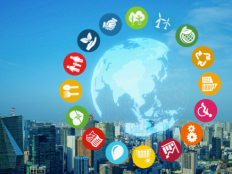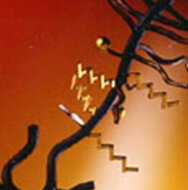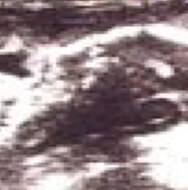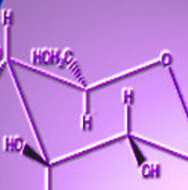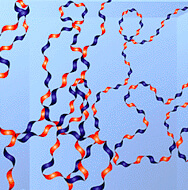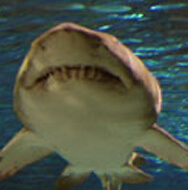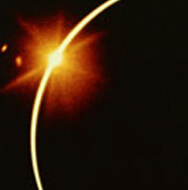In japan the influenza virus spreads in winter. How do viruses infect human cells?
Two glycoproteins called "hemagglutinin" and "neuraminidase" protrude from the membrane surface of influenza viruses. Hemagglutinin is responsible for the first step of infection, the binding of the viras to the host cell (the cell which the virus invades and in which proliferates). It does not bind to any part of the cell; it "snipes" a sugar chain sialic acid having a specific structure on the cell surface. The influenza virus causes infection by first binding to this sugar chain called sialic acid.
Antibodies that are produced in the body by vaccines prevent viral infection of host cells by binding to this hemagglutinin on the viral surface. The main component of currently used inactivated vaccines is hemagglutinin.
Neuraminidase is a substance that releases the virus from the cell by cutting off the sialic acid when the virus itself leaves the infected cell. Several anti-influenza agents prevent the spread of viral infection from one cell to the next by inhibiting neuraminidase. Neuraminidase is currently the focus of attention as a target for anti-virus agents.
There are a few viruses other than the influenza virus that infect the host cell by binding to the sugar chain on the cell surface. For example, the AIDS virus, herpes virus, hepatitis B virus, and corona virus, which is said to be the progenitor of atypical pneumonia SARS, are known to "snipe" sugar chains. The types of cells that are infected vary greatly depending on the virus, as do the sugar chains to which they bind, but there is little doubt that the sugar chains of the cell surface are easy targets for viruses.
The precise role of sugar chains within the cell is still not certain. However, as expressed in Part 8 above, the sugar chain is the face of the cell, and researchers believe that sugar chains produce a variety of cells.
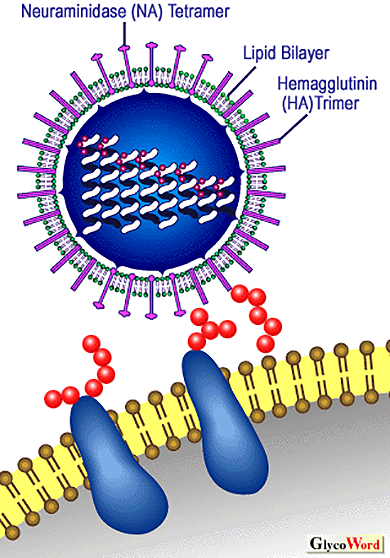
▲Influenza Virus and Sugar Chain
Even if one is vaccinated against influenza, why is it that the vaccine does not always work?
Influenza viruses are classified into three types: type A, type B, and type C. The types with repeated prevalence among humans and are considered a problem are types A and B. Type A in particular frequently repeats mutation and often becomes a popular topic. Current vaccines are typically made from a blend of three kinds of influenza virus vaccines by predicting the type that may prevail that year based on prevalence prediction investigation of type A and B influenza viruses (for example, the vaccine for 2004 was a vaccine containing hemagglutinin proteins of three kinds of viruses: type A Soviet, type A Hong Kong and type B).
Vaccines are made as described above, but their protective effect is not perfect. It is said, however, that vaccination lessens symptoms such as high fever and reduces hospitalization or death from complications. Elderly people and people with pre-existing diseases (such as respiratory disease, chronic cardiac failure, diabetes, and renal failure) are especially vulnerable to influenza becoming severe, and vaccination is desirable for them.
There is debate as to why there isn't a 100% protective effect. Several reasons exist for this, e.g., action on airway mucosa immunity that is thought to play a large role in protection against viral infection is weak because the vaccination is subcutaneous and even if the type of virus for a given year is correctly predicted and a person is vaccinated accordingly, the vaccine may react with a previously infected or vaccinated virus, thus weakening immunostimulation against the actual virus.
There are currently advances in researches for new vaccines such as intranasal administration of attenuated live vaccines to intensify prophylactic effect development of adjuvants (auxiliary agents to intensify the effect of vaccines) and artificial membrane vaccines.
Moreover, if research on the science of the sugar chain is further advanced and the mechanism of interaction between virus and sugar chains is clarified, it may become possible to produce a vaccine with more intense protective ability and other anti-viral agents against infection. It can be said that the various functions of sugar chains play a major role in the phenomenon of viral infection in living organisms.
♦Glycoforum
In "GlycoWord", a subcategory of "Glycoforum", key words of research in glycoscience are classified into genres, and a specialized researcher in each field has written a commentary.
Influenza Virus and Ganglioside
Influenza Virus and Its Glycoreceptor: Host Range Mutation of Human and Animal Influenza Viruses





